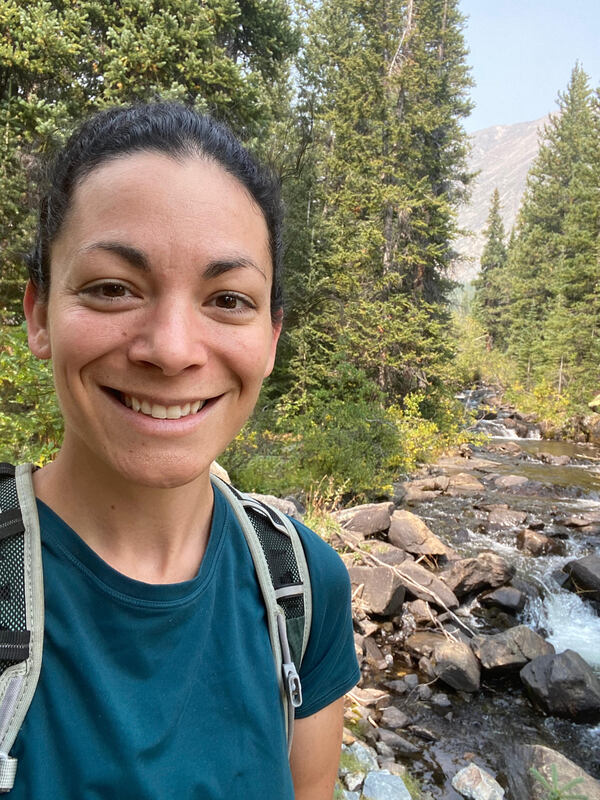I love how broad and interdisciplinary the term “ecohydrology” is, hence the many definitions from other AGU Leafs that have been featured prior. To me, it is a field that describes the many ways that water and life interact, almost like describing the intricate moves or setting of a dance. Some scientists might describe the complex footwork (e.g., where water is moving, from plants, to within the hyporheic zone, to surface-water groundwater interactions), while others might characterize the music (e.g., how climatic conditions drive hydrologic and biogeochemical fluxes), or even focus on the dancers themselves (e.g., which solutes or materials are being transported and transformed). This is an imperfect analogy... But the point being that all together, these aspects generate a clearer vision of how the world works.
What are your undergraduate and graduate degrees in?
Both of my degrees are in biology! I received my Bachelor of Arts in Biology from Vassar College, which is a small liberal arts college. I then pursued my Ph.D. in Biological Sciences at The University of Notre Dame.
How did you arrive at working in/thinking about ecohydrology?
From a very young age, I knew I wanted to do something related to ecology, so I pursued biology degrees in undergrad and grad school. While ecology is my “bread and butter,” I started thinking about how hydrology influences and is influenced by ecology when I was a first year PhD student at Notre Dame. I started asking research questions about the abiotic and biotic conditions that drive material transport in stream reaches. While these questions were fundamentally ecological in nature, because the research setting was in flowing streams, I had to understand how and where water was moving. A significant part of my graduate training was understanding and applying the math behind stream spiraling and other transport models, which was a fun challenge. As a post-doc, I’ve gotten to expand these questions to a new system, but at the core of my research is using ecology and hydrology to unravel how their interactions manifest in rivers. And as I keep moving forward in my career, the research that I am passionate about falls somewhere in the interdisciplinary space between hydrology and ecology.
What do you see as an important emerging area of ecohydrology?
One thing that I’ve learned during my time as a post-doc at MSU is to “mind the gap” – to find out what we as scientists might be missing by ignoring relevant spatial scales, under-studying certain periods of time, or by only using a single perspective to study a problem, for example. I think it’s important for ecohydrologist to ask “what are we missing?”. Not only does asking this question help present new ways to fill the evident knowledge and data gaps and improve our understanding of the “dance” I mentioned above, but it’s also an exciting way of finding new research topics and questions! It’s especially fruitful for focusing research efforts in remote or understudied regions, and finding new ways to solve problems.
Do you have a favorite ecohydrology paper? Describe/explain.
It’s hard to pick just one! Recently, I’ve been loving the paper in Geophysical Research Letters by Marinos et al. (2020): Is the River a Chemostat? I keep coming back to this manuscript as it empirically tests assumptions related to what is driving nutrient export. The paper elegantly shows that a combination of terrestrial/landscape and instream processes control nitrate export in the Mississippi River Basin, but that there’s scale-dependence on the patterns that you see at a watershed outlet. It’s an interesting take on where you measure determining your story.
What do you do for fun (apart from ecohydrology)?
This is a great question. Like many other ecohydrologists, my science is inspired by what I do outside of work. I’m passionate about getting outside, I love hiking, cycling, paddling, running, etc. In the before-covid times, I’d road-trip across the country to visit state and national parks, always “river-necking” (looking at rivers from my car) along the way. With covid restricting travel and events this year, I’ve found a greater appreciation for my local surroundings, and exploring the beautiful places within a few hours of my home in Alabama. I also have three rescue dogs (Lolly, Lucy, and Lester), and they keep me entertained.

 RSS Feed
RSS Feed